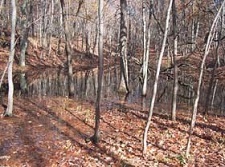Wildlife, Fish, and Marine Life Newsletter: Bats, Wetlands and Wildlife Management
The New York State Department of Environmental Conservation sent this bulletin on 11/09/2017 04:16 PM EST |
| DEC Delivers - Information to keep you connected and informed from the NYS Department of Environmental Conservation |
| Share or view as a web page || Update preferences or unsubscribe |
Wildlife, Fish, and Marine Life Newsletter |
|
Avoid Caves and Mines to Protect New York’s Bat PopulationsDEC urges outdoor adventurers to avoid exploring caves and mines that may be home to hibernating bats. Even a single, seemingly quiet visit can kill bats that would otherwise survive the winter. Disturbing hibernating bats forces them to raise their body temperature and deplete their fat reserves, their only source of energy until spring. Bats affected by white-nose syndrome are especially vulnerable. First documented in 2007, white-nose syndrome has killed more than 90 percent of bats at hibernation sites in New York. If you see hibernating bats in a cave, leave immediately. Anyone entering a northern long-eared bat (NLEB) hibernation site from October 1 through April 30--the typical period of hibernation for bats--may be subject to prosecution. NLEBs (pictured here) are listed as a threatened species. There is currently no treatment for bats suffering from white-nose syndrome. DEC and the state Department of Health are partnering with the National Wildlife Health Center and experts at universities across the country to better understand the disease and develop a treatment. Conserving Small Wetlands Benefits Wildlife and Water Quality
Small wetlands are some of the most valuable habitats in New York, but they are also one of the most threatened. Woodland pools are typically small and isolated, and are vulnerable to draining, filling, and other disturbances. In New York State, wetlands smaller than 12.4 acres (5 hectares) are not protected by the Freshwater Wetlands Act unless they are determined to be of “Unusual Local Importance.” At the federal level, Supreme Court decisions have potentially left "isolated" wetlands (lacking a permanent surface water connection to larger water bodies) unprotected. Yet, these wetlands provide important habitat for plants and animals, refresh groundwater, hold flood water, and help maintain water quality. The Hudson River Estuary Program provides technical assistance and outreach to Hudson Valley communities that are interested in conserving important habitats at the local level through their Conservation and Land Use Program. DEC to Discuss Managing Wildlife on Lake Shore Marshes Wildlife Management Area
DEC will host an open house to share details about a recently finalized management plan for this WMA: Wednesday, November 29, 6:30-8:00 pm DEC staff will be available for questions from 6:30 to 7:00 PM, followed by a formal presentation at 7:00 PM. Stop by and learn how the DEC plans to manage habitat for wildlife at this property. Check out what activities you can do at Lake Shore Marshes WMA. |



